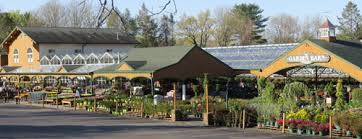How long is the NYC food protection course? Frequency and Duration: The course is 15 hours long and is given over five days and each daily session is three hours long. The course starts on Monday and ends on Friday.
What is NYC food protection certificate? The Food Protection Course trains individuals in food protection practices to ensure the safety of the food served in New York City’s food establishments.
Does NYC food protection certificate expired? The certificate never expires. There is no need to repeat the course. (Under special circumstances, the Department may require individuals to re-take the course.)
How many questions are on the food protection test NYC? The NYC Food Protection exam has 50 multiple-choice questions and lasts exactly one (1) hour. In order to successfully earn your certificate, you must score AT LEAST a 70%.
How long is the NYC food protection course? – Additional Questions
Is the food safety manager exam hard?
Yes, it is challenging. But don’t worry, most people pass. The ServSafe Manager exam tests your knowledge of several categories of food safety in a commercial foodservice environment.
Is the food safety exam multiple choice?
The final exam has 50 multiple choice questions and a 60-minute time limit. A minimum score of 70% is required to pass the exam.
How long does it take to get a food handlers card?
These courses typically take about one afternoon to complete, depending upon the required curriculum. The other way to obtain a permit is through online instruction. These courses can be completed at a convenient time and usually take about two to three hours to complete.
Do you need a food handlers card in New York?
The state of New York does NOT require typical food workers at a food facility and/or restaurant to receive a food handlers license. Although some states nationwide have this requirement, New York’s food safety laws are a little more lenient.
How do I get a food license in New York?
Note: You must apply for a new Mobile Food Vending License in person. This license requires that you register for the certification class and apply for the license at the same time. Separate fees apply for the license application and the class registration. Online payment is by credit or debit card only.
What is the most significant threat to food safety?
What is the greatest threat to food safety? Of all the microorganisms, bacteria are the greatest threat to food safety. Bacteria are single-celled, living organisms that can grow quickly at favorable temperatures.
What are 4 common food safety issues?
Results
- The search process.
- Food safety–related public health risks identified from the search process.
- Microbial contamination of foods.
- Chemical contamination of foods.
- Food adulteration.
- Misuse of food additives.
- Mislabeling.
- Genetically modified foods.
What are 5 challenges to food safety?
Challenges in Food Safety
- Changes in our food production and supply, including more imported foods.
- Changes in the environment leading to food contamination.
- Better detection of multistate outbreaks.
- New and emerging bacteria, toxins, and antibiotic resistance.
- Changes in consumer preferences and habits.
What are the 4 types of food hazards?
Food hazards may be biological, chemical, physical, allergenic, nutritional and/or biotechnology-related.
What is the 2 hour 4 hour rule?
Food held between 5°C and 60°C for less than 2 hours can be used, sold or put back in the refrigerator to use later. Food held between 5°C and 60°C for 2-4 hours can still be used or sold, but can’t be put back in the fridge. Food held between 5°C and 60°C for 4 hours or more must be thrown away.
What are 3 ways food can be contaminated?
There are three types of food contamination: biological, chemical and physical contamination. Learn how they occur, and ways to prevent them.
What are the 3 types of cross contamination?
There are three main types of cross contamination: food-to-food, equipment-to-food, and people-to-food. In each type, bacteria are transferred from a contaminated source to uncontaminated food.
What temperature must hot food be served at?
Hot foods should be kept at an internal temperature of 140 °F or warmer. Use a food thermometer to check.
Which is high risk food?
Examples of high-risk foods include : Dairy products (milk, cream, cheese, yogurt, and products containing them such as cream pies and quiches) Eggs. Meat or meat products.
What is the biggest cause of foodborne illness?
Raw foods of animal origin, that is, raw meat and poultry, raw eggs, unpasteurized milk, and raw shellfish are the most likely to be contaminated.
What are the 7 food borne illnesses?
However, the CDC estimates that about 90% of all foodborne illness in this country is caused by the following seven (7) pathogens: Norovirus, Salmonella, Clostridium perfrigens, Campylobacter, Listeria, E. coli 0157:H7 and Toxoplasma.
What temperature is the danger zone for food?
What is the Danger Zone? As the name suggests, the danger zone refers to a temperature range that’s dangerous for foods to be held at. And that range is between 40°F and 140°F.



